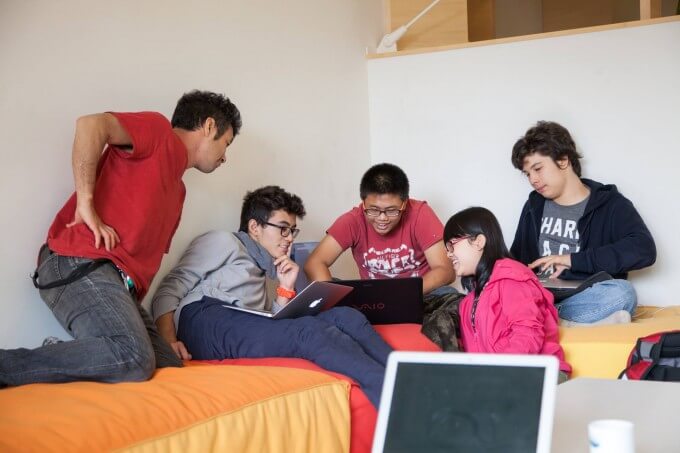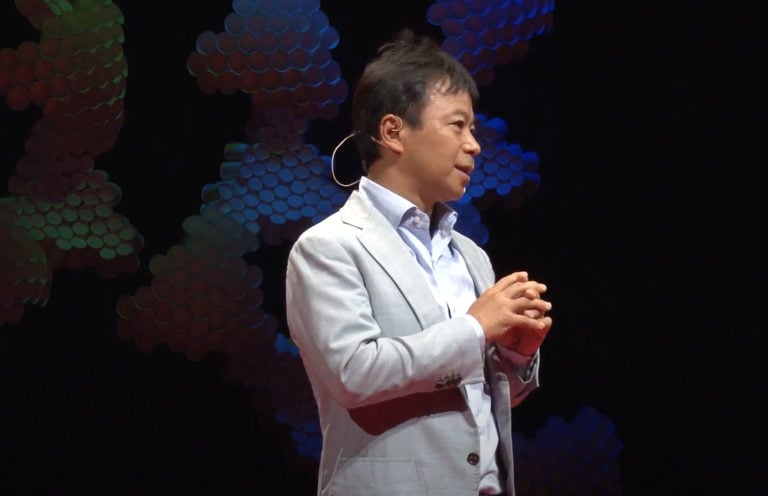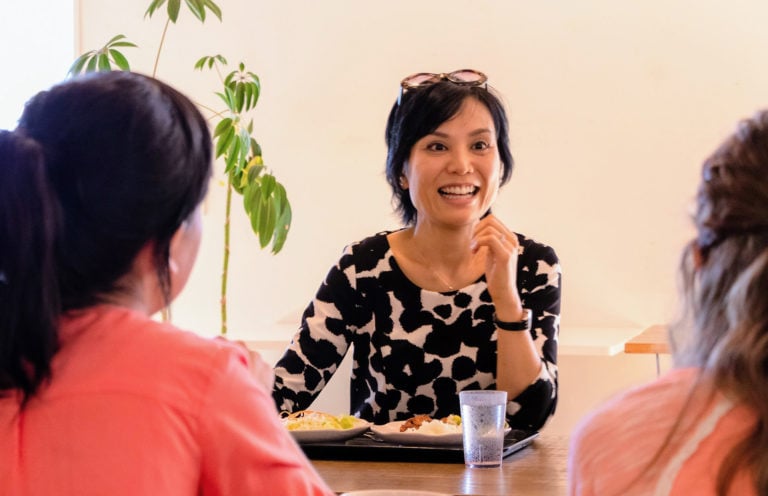This post is Part 2 of a full-length article about ISAK entitled Learning Through Shared Ideas, which was originally published in Nikkei Business Online on May 25, 2015. To read the other 3 sections, click on the links below.
“Learning through Shared Ideas”
– Design Thinking Enables Students Improve Problem-solving Skills and Teamwork
• Part 1 – What is Important for a Head of School?
• Part 3 – No One’s Opinion is Better Than Anyone Else’s
• Part 4 – IDEO x ISAK Special Design Thinking Workshop
When Is the Best Time to Go to Bed?
In the real world, there are no right and wrong answers. In order to reach the best conclusion, it is important for the members of a community to discuss problems and work toward a solution. At ISAK, whether it is a school issue or a dormitory issue, whenever a problem arises, time is set aside for the issue to be discussed.
At the beginning of the school year, the “lights out” time for students was set at 9:00 PM. This was a school decision based on typical boarding school schedules. However, some students felt that 9:00 PM was too early.
At a traditional school, the school administration would simply tell the students not to argue with the rules. However, at ISAK, the students were invited to discuss the issue as a group. One student said that she wanted to sleep at 8:00 PM, while other students wanted to stay up until midnight. Since ISAK students come from around the world and represent a range of cultural backgrounds, it was not going to be easy for them to come to a consensus.
However, a core philosophy at ISAK is that difficult discussions among students from diverse backgrounds and viewpoints can lead to positive benefits. Jemison comments, “As we move forward, we really want to look at issues that bring out very different opinions so that students can learn to respect each other, understand each other and grow from that.”
In the end, the students’ discussions led them to the conclusion that a lights-out time of 9:45 PM would be ideal. Several of the students went to Jemison to request this change in lights-out time. Jemison asked them how they reached their conclusion, and after some further discussion, he agreed to their request.
“The students were really surprised that I agreed to the time change. Their efforts led to a change in school policy. From my perspective, I trust the students. If they have talked through an issue thoroughly and come up with their own solution, I want to be open to their ideas.”
When the student representatives returned to the dorms with the good news about the time change, they were greeted with cheers. “Mr. Jemison agreed to a 9:45 lights out time! Everyone, be sure to follow the rules!” Rather than simply have adults decide on rules for them, if students have ownership over aspects of their school life, they are more likely to obey the rules on their own. This is how the open, healthy ISAK community is being developed.
This post is part 1 of a full-length article about ISAK entitled Learning Through Shared Ideas, which was originally published in Nikkei Business Online on May 25, 2015. To read the other three sections of the article, click on the links below:
• Part 1 – What is Important for a Head of School?
• Part 3 – No One’s Opinion is Better Than Anyone Else’s
• Part 4 – IDEO x ISAK Special Design Thinking Workshop
About Nikkei Business Online:
NBO is an online platform providing compelling original content to help guide top and middle managers of companies in Japan. The website has 1.62 million subscribers and receives 30 million page views each month.
※本記事は、日経ビジネスオンラインの掲載記事をISAKが翻訳したものです。(転載許可をとっています)




